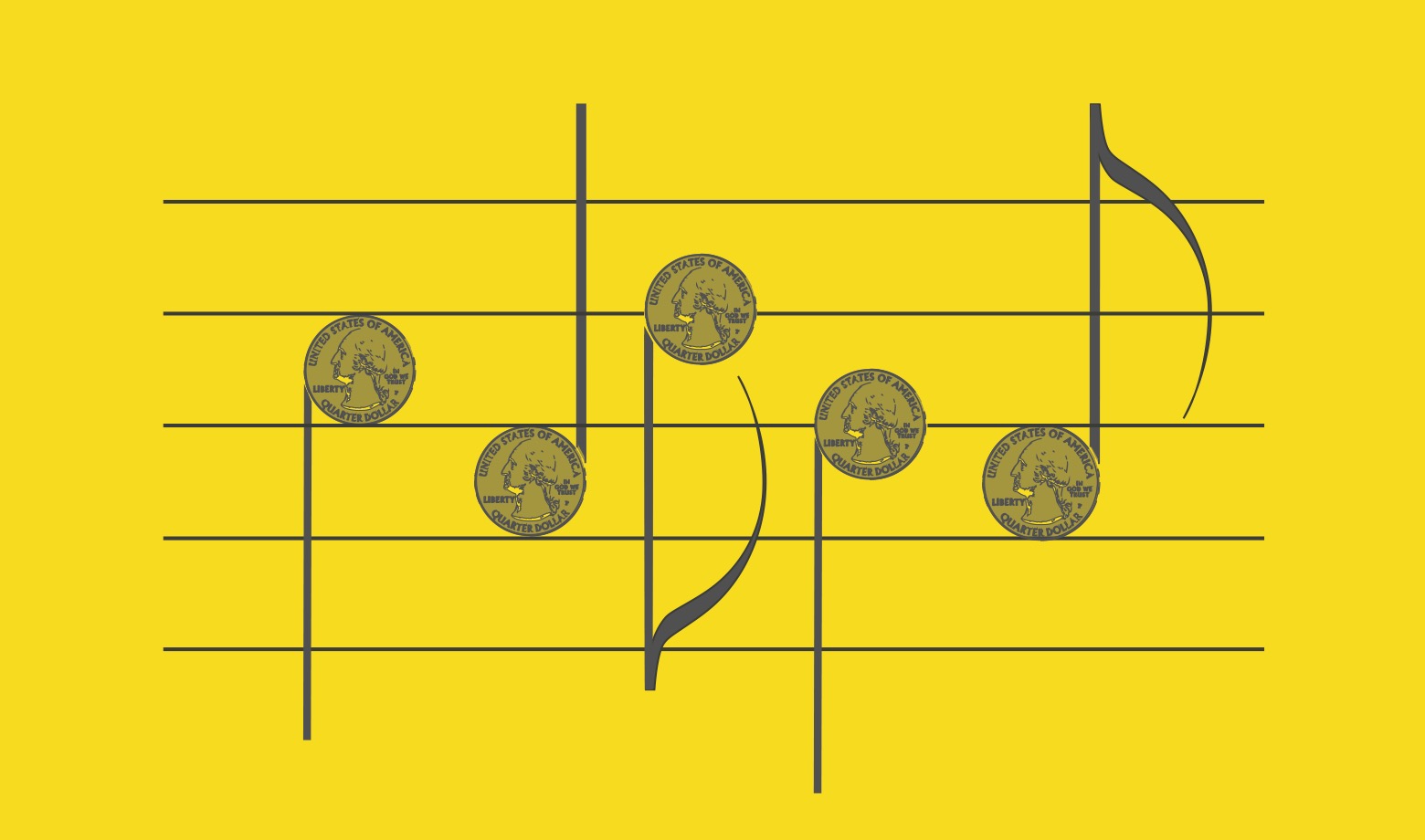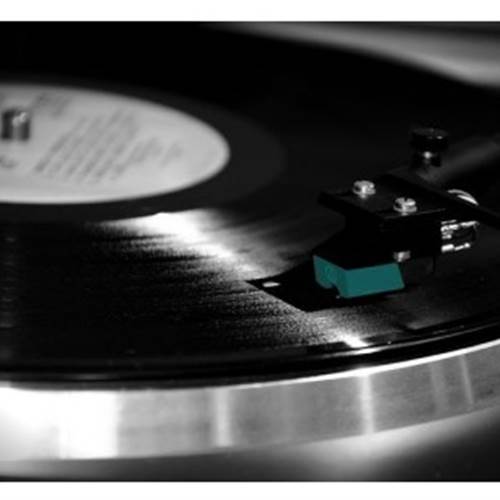
The Money's in the Middle: Why your lower and middle range deserves more love
Posted Friday, March 18th 2016 by Andrea Grody
Everyone is always worried about the “money notes”: the high notes in a song. What about all the other notes?! Low and middle notes deserve much more love and respect than they usually get.
Everyone is always worried about the “money notes”: the high notes in a song. What about all the other notes?! Low and middle notes deserve much more love and respect than they usually get.
LOW NOTES ARE A MISSED OPPORTUNITY
Low notes often get neglected because they're “easy.” Our vocal folds are naturally in their thickest and strongest register, so for most people, it takes little to no effort to make a connected sound on those notes. We can achieve a pretty good result without worrying about airflow or resonance, both of which are crucial to nailing high notes. But nailing the high note is all about sustaining a vocal register on a note higher than that register's natural range. In other words, we're trying to maintain the setting that is so comfortable to achieve on low notes. If airflow and resonance are so important to those high notes, why wouldn't you want to set them up well when the notes are easier to reach? It's like starting a race from a standing position when you could have gotten into a runner's stance first. What a missed opportunity!
Neglecting the low notes also feeds into the negative psychology that makes high notes hard. Many of us have had the experience of spending an entire song fretting about one scary note at the end. We aren't engaged with the start of the song because we feel the real effort is coming later. Then we tense up as the high note approaches; we take a big breath, if we're not too tense to manage it; and we throw all that air and all that tension onto a note that needs minimal air and relaxed muscles. Performing a song in this way not only botches the high note, but also robs the rest of the song of the care and respect it deserves.
When you treat your lower notes well, your high notes will feel less high. Every time you reach those notes in a comfortable, low-stress way, they become less scary, and the tension associated with them starts to dissipate, allowing you to make the lower notes even better, which makes the high notes even easier and more comfortable to access. It's a wonderful cycle of good technique and positive energy!
HOW TO PRACTICE
- On their own. Starting on a low G, sing “Geh-neh-neh-neh-nehn” all on one note. Sing all the way through the phrase, meaning your air should be steadily engaged from start to finish. Feel the buzz in your nose as you activate your nasal resonance with the letter N, and sustain that feeling through the vowel. You can physically feel this by touching your nose, or by holding a finger slightly under your nostrils to feel the steady air flow. Once you've mastered this exercise, practice it on each note up to the G an octave above where you started, then back down. When it feels comfortable, change up the vowels, trying “Goh-noh-noh-etc.” or “Gee-nee-nee-etc.”, sustaining your resonance all the way through each vowel. Then try mixing up vowels however you like (for example, “Gee-nay-nah-noh-noo”) and keep a steady setup throughout.
- Descending exercises. Try the syllables above on a descending scale of 5-4-3-2-1, or 3-3-3-2-1. Work up through your middle and higher range. Make sure that your vowels retain their quality as you change pitch. It's tempting to let the vowels darken as you go down, which is undesirable both on its own and as a habit that encourages us to excessively brighten vowels as you go up. Also make sure that if you switch vocal registers as you go higher in your range, you switch back into your lower register as you go back down.
- Skipping between registers. Try “may-may-may” on 1-3-1, 1-4-1, 1-5-1. Make sure the vowels retain their quality and that the highest note doesn't get accented. A “note sandwich” of two soft notes and a big exploding middle note is a sign that your technique isn't holding as you ascend. (It usually means you're using too much air or opening your mouth too much on the high note.) You can repeat the first note of the exercise (1-1-1-3-1) or the top note (1-3-3-3-1) to help get your setup back in shape if you're having trouble holding onto it.
- Stepping slowly upward. Songs that gradually step upward are deceptively hard because we have to hold onto our happy vocal setup through several upward motions, however small they may be. Try any of the vowel combinations above on 1-2-3-4-5-4-3-2-1. Repeat the lowest note 3-5 times at the start or the end of the exercise to ensure your setup is solid. Repeat the highest note 3-5 times to make sure you haven't lost any of your setup on the journey upward.
Practice your lower notes in four ways:
STUCK IN THE MIDDLE
Sometimes, the most challenging areas to navigate are the middle notes, the ones only a couple steps away from our comfortable lower register. We can usually get away with bad technique on these notes, but that makes them feel much higher and harder than they are, and we end up with awkward cracks, shifts, or breaks if we try to go past them. Depending on the repertoire, the middle notes are usually G-G# or Bb above middle C for women and C#-D or E-F above middle C for men.
If you're singing a song where the highest notes are fully belted - meaning you're accessing as thick and connected of a low register as possible on those notes - then the middle notes are your first checkpoint to make sure you're maintaining the setup you established on your low notes. If those notes don't feel comfortable, assess the problem right away and adjust as necessary so you're prepared for your high notes.
If the highest notes in your song are mixed - if you're not accessing the strongest possible register - then the middle notes are a crucial transition moment. Try switching registers on those notes rather than dragging your low register as far as it can go. Remember these are not your “money notes,” so they don't need to be huge. Once we reach the “money notes,” we have a little leeway for our technique to waver slightly and for the note still to succeed. However, if we fall into that trap before we reach the peak, it's hard to recover. It's like balancing on one foot and leaning a little too far to one side, then trying to shift back over to the other side. If you don't stay centered, you'll fall over!
DON'T BE A JOHNNY ONE-NOTE
The greatest benefit of low and middle notes is that when the notes require less effort to reach, we have more freedom to style our singing in subtle and interesting ways. These are the moments that allow your individuality as a performer to shine.
No singer is hired to be a mere high-note machine. The colors and nuances in all registers of your voice, not just the highest one you can reach, are what make your voice unique and special. Good high notes may make you the money, but meaningful low and middle notes are what make you an artist.

Andrea Grody
Senior Voice Teacher Associate, Musical Theatre Career Consultant, Resident Music Director
Andrea Grody was the original Music Director/Supervisor of the Tony Award-winning Broadway musical The Band’s Visit, is Musical Director/Supervisor & Vocal Arranger for the 2019 new musical adaptation of Tootsie, and dozens more critically-acclaimed musicals & performances across the country and NYC. Andrea discovered a love for vocal technique and voice teaching after completing her Voice Teacher Training & Certification course in 2015. She is currently developing Songwise, an online learning platform that teaches singers to read music.

TLC for your R&B
The best part of my job as an instructor at New York Vocal Coaching is helping varied singers gain control over their voices. In this article, I want to share a few thoughts on the R&B style and one of my artists who is working to master her R&B sound.

NYVC Singer Spotlight: Wes Lieberman
Wes Lieberman is a multifaceted singer, songwriter, and musical theater artist whose journey is rooted in curiosity, hard work, and self-belief. NYVC’s Jamie Kaufman had the pleasure of talking with Wes about his evolving artistry, including unlocking his mix voice, expanding into new styles, and the mindset shifts that have allowed his voice and creative identity to continue growing.

Vocal Inconsistency - Not to Worry!
When your voice starts to sound and feel strange, it can be pretty scary. It can make you feel like you're not a good singer anymore and can cause you to doubt yourself. Sometimes, we try to save our voice by not using it, but that can actually make things worse...